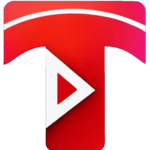- Tubelator AI
- >
- Videos
- >
- Science & Technology
- >
- Revolutionize App Development with Open-Source AI Agent for Building FULL STACK Apps
Revolutionize App Development with Open-Source AI Agent for Building FULL STACK Apps
Discover how the free alternative 'Devin' can help you create sophisticated full stack applications in a fraction of the time, with improved functionality and ease of use. Learn how this open-source AI agent by Pythagra (formerly GPT pilot) can revolutionize your app development process.
Video Summary & Chapters
1. Building a Full Stack Application 🛠️
Introduction to using AI to create full stack apps
2. Installing GPT Pilot Command Line Interface ⚙️
Step-by-step guide on installing GPT Pilot CLI
3. Configuring Environment and API Keys 🔑
Setting up environment file and API keys for OpenAI
4. Initializing Database and Running the App 💻
Database initialization and starting the application
5. Setting Up the Project 🛠️
Setting up the framework and project details.
6. App Description & Features 💬
Defining the real-time chat app features and user interactions.
7. Refining Project Ideas 🔄
Discussing user accounts and chat session settings.
8. Moderation & Spam Control 🚫
Implementing message flagging and spam prevention measures.
9. User Interaction & Limits ⏰
Setting message limits and emoji usage in the chat app.
10. Collaboration with AI 🤖
Exploring AI's role in app development and iteration.
11. VS Code Plugin & GPT Integration 💻
Integrating GPT-4 tokens and Pythagra into VS Code for coding.
12. Demo: Full Stack Chat App 📱
Demonstrating a full stack chat application and its functionalities.
13. Verification and Login 📧
Email verification and successful login process.
14. Exploring Chat Interface 💬
Overview of the chat rooms and basic interactions.
15. Enhancing Chat Features 🛠️
Adding new functionalities to the chat application.
16. Cost and Efficiency 💸
Discussion on cost efficiency in building applications.
17. Implementing Dashboard Changes 🖥️
Guided implementation of dashboard updates.
18. Code Development Process 🤖
Step-by-step coding process with AI agents.
19. Human Testing and Debugging 🧪
Testing and debugging process with user interaction.
20. Debugging Avatar Image Issue 🖼️
Troubleshooting avatar image display problem.
21. AI-Powered Debugging Assistance 🛠️
Utilizing AI for debugging and issue resolution.
22. Troubleshooting Avatar Display
Identifying and resolving issues with avatar display.
23. Fixing Image Display Issue
Implementing a fix for the image display problem.
24. Integrating Sound Notifications
Adding sound notifications for chat messages.
25. Testing Sound Implementation
Verifying the functionality of the sound notifications.
26. Seamless Functionality Addition
Adding new features with AI assistance in existing apps.
27. Closing Thoughts 🌟
Final words and call to action for viewers.
28. See You Soon 👋
Encouragement to subscribe for future content.
Video Transcript
Let's build an entire full stack application using AI.
A few months ago, I made a video about GPT pilot
and now they have a ton of additional functionality
that I'm really excited to show you.
Not only can you build full stack applications,
sophisticated applications, apps that would take weeks
or even months to build,
but now the interface is much easier.
The agents work much better
and you can actually add features to your application.
And the best part is completely open source and free.
And thanks to Pythagra for sponsoring this video.
Pythagra just changed their name from GPT pilot.
So the first thing I'm gonna show you is how to install it.
And we're gonna install GPT pilot,
the command line interface version.
This is the completely open source version.
You can use GPT-4, you can use cloud,
you can use any open source model that you want,
including running it locally.
But for today, we're gonna be using GPT-4.
And then after that, I'm gonna show you the VS Code plugin,
which is now Pythagora.
Okay, enough talk.
Let me show you how to install it.
First navigate to a folder that you want everything created in.
So I have this one at AI Projects.
Then what we're gonna do is clone the repo.
So get clone and then the repository URL
and of course I will drop this in the description below
and then hit enter to clone the repo.
Then you're gonna CD change directory into GPC pilot like so.
And today we're gonna be using VNV to manage our Python environment.
environment. I know I usually use conda conda is great as well, but today we'll be using vn. So Python dash m vn
pilot nv next we're gonna do source pilot dash nv so the environment name we just created slash bin slash
Activate and that's gonna activate our environment then you'll know it's active because it'll say so right there in
parentheses. Now if you're on Windows it's slightly different and this is what
you're gonna type instead. Pilot-n-v-slash scripts-slash-activate and I'm on a
Mac so I don't have to do that but if you're on Windows that's what you do. Next
we're gonna install all of the requirements very simple as usual pip-install-r
requirements.txt. Hit enter and it's done. Next we're gonna CD into the
pilot directory within GPT-pilot. So go ahead and do CD pilot and then hit enter.
Now we're going to take the example environment file and rename it to just .m and that is going
to be our environment file. So mv.mv.example.space.mv hit enter and that should be done.
Now open up VS code and make sure you open the folder GPT-pilot. Within that there's going to be
a pilot folder. Click that and then you're going to click the .m file right there.
And this is where you're going to enter all your environment information. Now this
is also where you get to choose which large language model you use and
provided by which service. So if you wanted to use OpenAI which we'll be doing
today, you're going to enter your API key and your endpoint right here and I'm


 Install Tubelator On Chrome
Install Tubelator On Chrome











